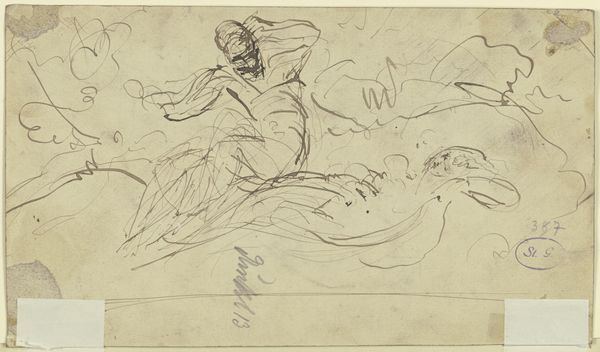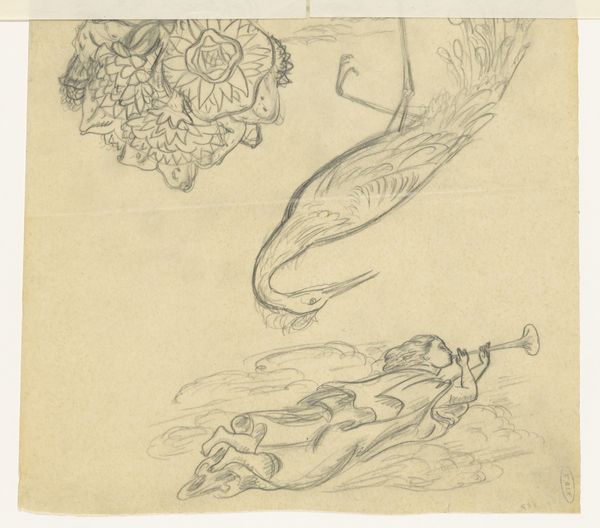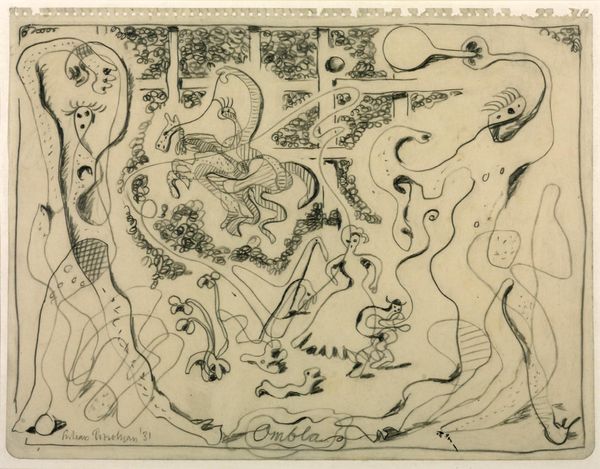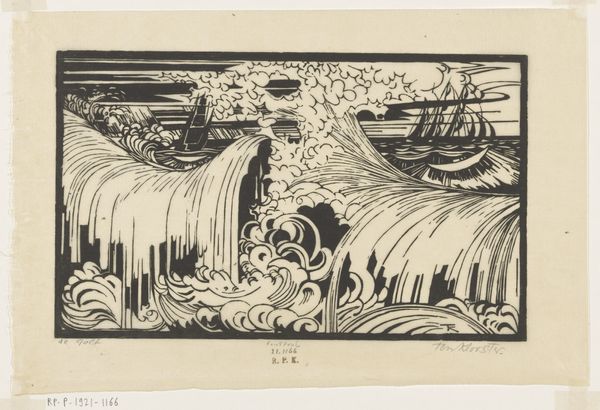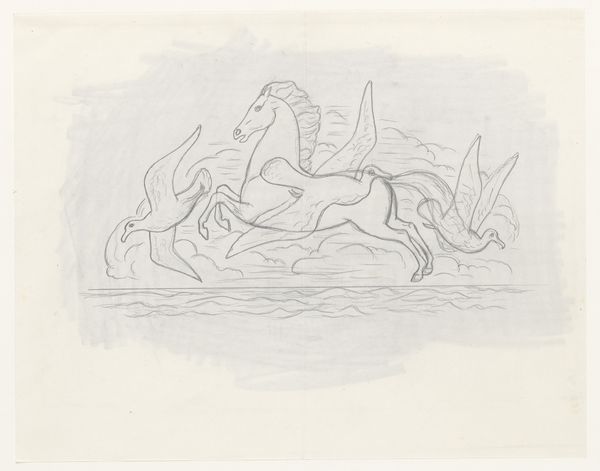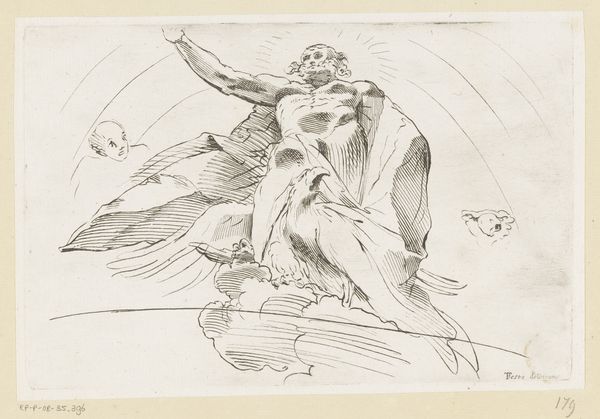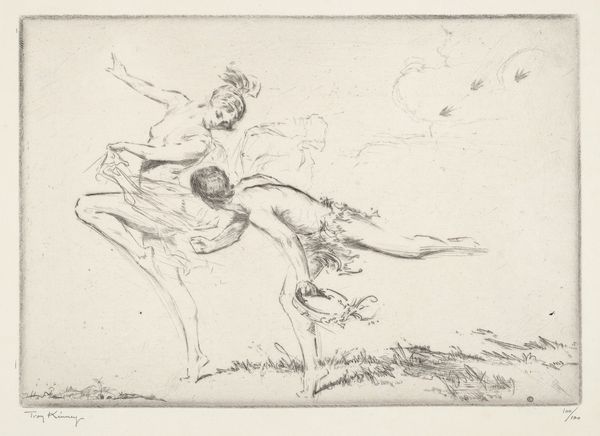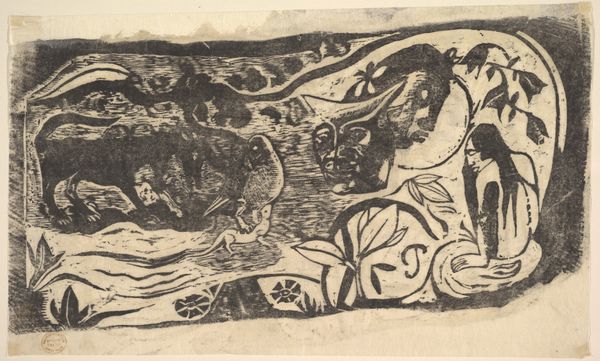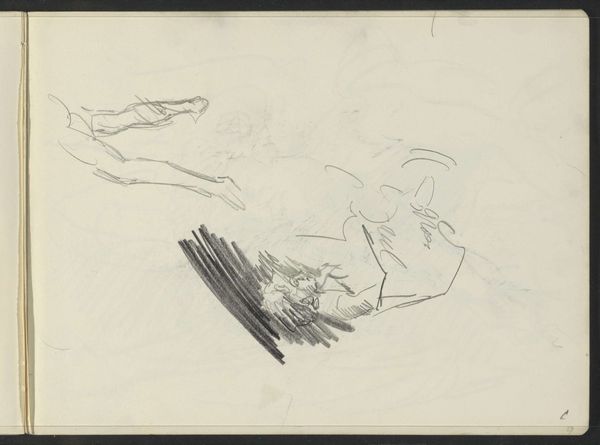
Copyright: Public Domain
Editor: Hans Thoma's "Mermaid with Fish," created around 1900, rendered in pencil and ink, has such a dynamic, almost unfinished quality. I’m curious about what might have led Thoma to depict this subject matter with these materials, but I am not certain how to read this. What do you see in this piece? Curator: I see a fascinating engagement with the means of production and its socio-historical implications. Thoma’s choice of relatively inexpensive and readily available materials – pencil and ink – destabilizes traditional notions of "high art." This piece hints at the democratization of art-making, making it more accessible to a broader segment of society than, say, a large oil painting would. Consider the labor involved; this piece can be completed quickly with relatively simple tools. Editor: So you're saying that the *process* and the accessibility of the materials are just as important as the final image itself? It's about *how* it's made as much as *what* is made. Curator: Precisely. Furthermore, think about the mermaid as a figure, a common trope of Romanticism, often associated with natural forces. This drawing, created during a time of rapid industrialization, highlights the changing relationship between labor, nature, and consumption. The mass production of imagery makes subjects like mermaids commonplace, distancing them from the social narratives around skilled artisanship. Does the sketch-like quality perhaps suggest something unfinished about the social and economic transitions underway? Editor: That's a totally different way of looking at it than I initially thought. I was so focused on the romantic aspect, I missed the commentary on production. Curator: We tend to glorify craft but we also forget that every work exists in a market economy. How does the industrial revolution impact artistic value and artistic labor? Editor: So it is. I had not really made these associations between consumerism and choices of subject. Thank you! Curator: It is a useful critical lens when analysing art. It forces one to ask difficult questions about class, cultural values, and modes of exchange.
Comments
No comments
Be the first to comment and join the conversation on the ultimate creative platform.
